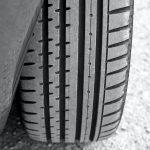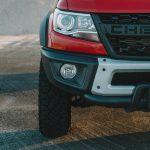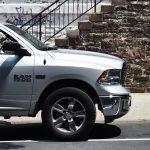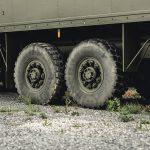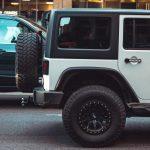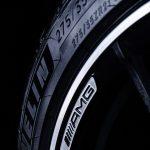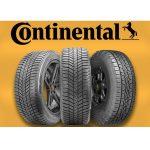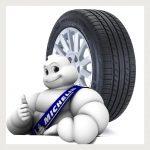Honda Tire Size Guide And Types of Tires
Honda Motor Company, Ltd.; commonly known as Honda is a Japanese public multinational conglomerate manufacturer of automobiles, motorcycles, and power equipment, headquartered in Minato, Tokyo, Japan. Ever wonder if your current Honda tire size is correct? Strictly speaking, the real question is: how compulsory is a specific fit of tires?
Honda tire size is an important part because they heavily affect performance. Every Honda model has a tire optimized for its purpose and function to achieve the best performance. Tires of the right size are the only ones that will fit on any vehicle. Vehicles come in different sizes, which means so do the tires used for driving each of them.
Not using the ideal tire size for your vehicle can compromise road safety, among other aspects of driving.
Related: Car Tire Size Chart And Sizing Guide, Tesla Tire Size By Model and Year , Chevrolet Tire Size Guide for Different Models, Ram tire size guide for all models (size charts and dimensions included)
Summary
- Honda: Automobiles And More
- Honda Tire Size Guide for Different Honda Models
- How to Choose the Right Honda Tire Size For You
- Shoes For The Road
Honda: Automobiles And More
The engine type that best allows for max speed is always used in the base trim of all models of Honda cars. These engines are always good enough to handle alternate Honda tire sizes. The transmission type that supports these engines and the driving conditions that the vehicle is made for are the only other factors that affect the type of tires.
The popular automobile models of Honda are as follows:
- Honda CR-V: This is a mini SUV. The Honda CR-V’s driver gains both comfort and confidence in tackling even the roughest conditions he or she may encounter.
- Honda Element: Did you know there was a time when the already dazzling Honda CR-V was transformed by its manufacturer to a higher level? Released for almost a decade (from 2002 to 2011If there’s one thing that makes the Honda Element such a hit was that not only was it a great car to drive, but it was also marketed for dogs! As a pet-friendly ride, the Element features nifty features (such as a net crate) that will best address pet owners’ driving needs!
- Honda BR-V: The Honda BR-V just doesn’t look tough, it’s built tough as well. Meant to withstand any driving condition, this SUV’s a perfect complement for drivers with active lifestyles. For a seven-seater vehicle, the Honda BR-V makes sure that every passenger is offered the highest level of safety and comfort. Various adjustments to create space solutions transform each trip into a wonderful and exciting adventure.
- Honda Avancier: This model has been built, ranging from a mid-size car to a mid-size crossover SUV. The Honda Avancier is a vehicle designed to advance through different hurdles and challenges in all terrain
- Honda Pilot: Now, this is the full-size SUV. Comfort and safety for the driver and the passengers are of the utmost importance for the Honda Pilot. A Multi-Angle Rearview Camera provides visibility and assurance from collisions. The HondaLaneWatch™ system provides safety on the go. With a seating capacity that can fit up to eight people, and still have ample cargo space for heavy loads, the Pilot usually wears the maximum size wheel on the Honda line.
- Honda Crosstour: Similar to the Honda Pilot when it comes to size, the Crosstour redefined comfort by providing only two rows of seats. As such, the Crossover added a touch of class by prioritizing passenger comfort over a typical luxury in a crossover SUV type of ride. That’s what Honda attempted to do during the late 2000s, with its release of the Honda Crosstour. During the latter years of its production, the Crosstour undertook a facelift. More power was emphasized in the vehicle, and the car’s price tag offered a more practical and convenient take for motorists aiming to own a dazzling Honda ride. Additionally, many tire technicians love this car and its tire sizes are easily available in any tire shop.
- Honda Odyssey: Minivans are often considered “boring” vehicles. The Honda Odyssey, however, begs to disagree. With space solutions – such as easier access to the third row – and an innovative center console that contains holders for beverages and a trash bag ring, passengers will surely delight in riding this minivan. Of course, safety should always be considered, and the Honda Odyssey definitely does not disappoint in this category. With a blind spot information system and collision warning sensors, this minivan may very well be the definition of road safety.
- Honda Civic: A fun ride, among racers and professionals alike, the Honda Civic brings together the best of efficiency and sporting in one tight and neat package.
- Honda City: From the first generation Honda City which was a subcompact car to the latest generation model, there is no doubt that this car model has always been one of the most reliable in the world.
- Honda Accord: The Honda Accord is a lineup of cars designed and produced by automobile giant, Honda. The first edition was released in 1976 and is still marketed today. It has been one of the most popular lineups since 1989 and has a variety of forms – hatchbacks, wagons, coupes, and crossovers.
- Honda CR-Z: Designed to make not just an impact in providing a safe ride, but as well contribute to saving the environment, the Honda CR-Z is a hybrid electric car perfect for environmentalists. Known to be one of the cleanest cars ever made, the Honda CR-Z is proud to be recognized by the California Air Resources Board (CARB) as a Honda Advanced Technology Partial Zero Emissions Vehicle (AT-PZEV). Impressive as well is the CR-Z’s unique and iconic style that Honda can only provide. It’s an eco-friendly yet eye-catching ride!
- Honda HR-V: This is a subcompact crossover vehicle. Initially released to a limited market in Japan during the years of 1999 to 2006, this SUV proved to be a reliable vehicle, prompting Honda to release it to a wider user base.
- Honda Mobilio: Now this one is an awesome mini MUV, the Honda Mobilio. Able to fit seven people in the most comfortable manner, the Honda Mobilio allows even the largest families to enjoy any kind of trip.
- Honda Stream: Blending the best of MPV and SUV sensibilities, the Honda Stream is an awesome car to both drive and ride in. Launched in 2000, the Honda Stream has undergone several facelifts. As such, it is quite hard to define what sort of vehicle it is. Currently dubbed as a compact SUV, the Honda Stream does continue to excel in performance and style – key essentials that every motorist is always looking out for.
Honda Tire Size Guide for Different Honda Models
| Model | 2005-2010 | 2010-2015 | 2015-2020 | 2020-date |
|---|---|---|---|---|
| Accord | 205/60R16 | 225/50R17 | 215/55R17 | 225/50R17 |
| Civic | 195/60R15 | 215/45R17 | 215/55R16 | 215/50R17 |
| Crosstour | ——— | 225/60R18 | ——— | ——– |
| CR-V | 215/65R16 | 225/65R17 | 225/65R17 | 235/60R18 |
| Element | 215/70R16 | 215/70R16 | ——– | ———— |
| Fit | 195/22R15 | 175/65R15 | 185/55R16 | 185/55R16 |
| HRV | ———– | ———– | 215/55R17 | 215/55R17 |
| Odyssey | 235/65R16 | 235/65R17 | 235/65R17 | 235/60R18 |
| Pilot | 235/70R16 | 245/65R17 | 235/60R18 | 245/60R18 |
| Ridgeline | 245/65R17 | 245/65R17 | 245/60R18 | 245/60R18 |
How to Choose the Right Honda Tire Size For You
To select the correct Honda tire option for your car, you must learn how to read tire sizes. There are two ways for measuring tires: metric and flotation depending on the tire brands. The most common tire measurement system is the metric system. Each number and letter on a tire is significant and pertains to the tire’s size, sort, design, or special features. It is an alphanumeric tire code made up of a series of letters and numbers. This section will demonstrate how to read tire information.
An example of metric tire size is as follows: P205/65R16
The Initial Letter: The first letter denotes the tire’s class. Tires are divided into four categories, which should not be confused with tire types. The driving condition (irregular road conditions or uneven road conditions, road terrain, city vs. mountains, countryside vs. city), driving style, and vehicle options will determine the right tire class.
- P metric tire: This indicates a passenger vehicle. A passenger vehicle can be a minivan, a small pickup truck, a sedan, a sport utility vehicle, or an automobile.
- LT stands for a light truck tire. It means the tire was designed for the larger tire found in light trucks, or vehicles capable of transporting medium loads such as farm tires.
- ST: The abbreviation for “special trailers” is ST. It’s a term that’s used to describe tires that are built to carry big weights. This type of tire is required for heavy-duty vehicles, utility trailers, and boat trailers. Heavy-duty winter tires, studded snow tires, and other special vehicles use tires in this class. You can also use tires in this class for driving in light snow.
- T: Temporary or replacement tires that should not be driven faster than 50 mph and should only be utilized when coming to a halt in a garage. This number is commonly found on lower-cost tires.
If this letter is missing, the tire is almost certainly a passenger tire.
The three-digit number: The tire width is represented by the three-digit number following the first letter. It (205) specifies the tire width in millimeters as measured from the sidewall height to the tire sidewall as seen from the front.
The Two-digit Number: The Aspect Ratio or Tire Profile Size is represented by the two-digit value that follows. Tires with a lower aspect ratio have superior performance and average traction than those with a larger aspect ratio, for instance, a strong tire with a longer tire lifespan will have a lower aspect ratio.
The Following Letter: The tire’s construction type is indicated by the letter that follows.
The four different tire construction types are as follows:
- R: A tire with an R rating is a radial tire. at least 98% of all manufactured tires are radial tires.
- D: This is an abbreviation for diagonal ply or bias-ply
- B: This means belt constructions
- F: F means that it is a run-flat tire
The last number: The last number on the metric measurements of the tire stands for the tire diameter.
Other important information to check on a tire includes:
- The tire speed ratings/speed rating
- The maximum speed capability
- Load Carrying Capacity
- The alternate tire sizes
- Tire load
- Tire manufacturers
- Rim diameter
- Rim size
- Tread design (thin tread groove or wide tread pattern)
- Tire tread depth
- Tire pressure capacity
- Tire inflation capacity
Click here for more information on how to read tire sizes.
How To Read Honda Tire Size and Wheel Air Pressure Info Label explained (video)
Shoes For The Road
Tires provide the grip you need to drive on whatever surface you’re driving on. The larger your tires are, the more grip your vehicle has on the road. It’s because a larger tire diameter allows more of the tires’ surface to be in contact with the road when driving.
Increasing contact with the road gives your vehicle more to hold onto, which increases its ability to maneuver and becomes easier to handle. Those are two important driving functions that every vehicle has to do well to be safe when driving. Hence, passenger car tires go with a passenger car, and truck bus tires go with a truck bus because they’re designed to fit the vehicle they’re made for and have enough surface coverage.
However, you can also upgrade your tires’ sizes when presented with the option to do it. The more tire that touches the road when you drive, the more stable your vehicle will be.
Higher replacement costs for bigger tires
With all the benefits a larger tire gives you, this is its inevitable downside. Using larger tires will cost you more money when the time comes to replace them. That’s because changing to larger tires with improper sidewall height can cause damage.
Larger tires mean larger diameters which include the sidewall. When you fit a tire with a higher sidewall than the recommended height to your vehicle, it will damage its suspension system, wheels, and the tires themselves. It can also expose your vehicle to the risk of incorrect speedometer ratings.
The risk of throwing off your speedometer is also why it’s not recommended to replace your tires with a different size. Doing that could also do serious damage to your vehicle’s antilock brake systems and stability system calibrations. That’s because your vehicle’s computer is set to measure the current speed by considering the size of the tire installed on the car, and a larger size will confuse it.
Smaller tires on larger wheels
If tire inflation is kept equal, taller tires are better for stock wheels. Smaller tires on larger wheels will cause accidents. Smaller tires on large wheels are unsafe in all driving conditions.
While it doesn’t confuse your vehicle’s speedometer and odometer, it can have shorter sidewalls. A short tire sidewall is stiffer, which increases the chances of blowouts and tears on bumpy roads regardless of the driving style.
Tire Size Types
Tire experts generally classify tires into three major types: all-season passenger tires, summer tires, and heavy-duty winter tires or snow tires. A better categorizing will be as follows
- All-season tires: All-season tires maximize comfort. All-season tires create smooth driving conditions on the highway and have good traction for all seasons.
- Touring tires: Touring tires help secure a smooth ride like all-season tires and have more performance-boosting benefits like responsive handling. Touring tires tend to have increased max speed ratings, which means the tires can endure higher speeds while still offering the driver security and control. Touring tires are sometimes also called highway tires and help the standard wheel to experience performance enhancement.
- Summer tires: These performance tires for warmer weather, summer tires could be a good fit for conditions in which the temperature won’t fall below 7°C. Summer tires are designed to work best in warm weather conditions and aren’t made for every season. They have a strong grip and responsive handling in various situations, such as dry or wet weather.
- Performance tires: Though touring tires are geared more toward performance, they’re not to be confused with actual performance tires. Performance tires typically have higher max speed ratings than touring tires but are also designed to support you in different weather conditions, especially wet weather. The design and grooves in performance tires work by increasing the grip to help you stay safe in ideal weather conditions for that specific set of performance.
- Pick-ups and SUVs: Larger vehicles, such as a truck or SUVs, have larger diameter wheels and require a tire that can withstand the terrain. Depending on your car usage, driving style, and location, you may consider one of the following. Most of them are made for off-road use; this is where farm tires serve best.
- Rib tires: These ones are glorified farm tires. They are just regular tires but with raised edges. They can serve you well in a variety of weather conditions and have good traction on the road. The ribs in the tire treads are designed to support the vehicle and boost the car’s fuel efficiency.
- Spare tires: A common special tire is a spare tire. Spare tires are designed to help you out in a bind if you have a flat tire. A leader in tire technology, Firestone tires is popular for manufacturing donut spares. These are compact temporary spare tires, sometimes referred to as donut spares, which are limited in how much you can drive them and only at certain speeds. For example, you may be able to drive for up to 50 miles at 50 miles per hour on a spare tire due to a decrease in tire pressure.
- Winter tires: Winter tires can be common in certain areas of the world and are designed to deal with cold weather conditions. Winter tires can handle weather conditions like snow and ice. Non-studded or stud-less winter tires are generally more popular because they may legally be used on more types of roads and environments.
More about How Different Types of Tire Can Affect Your Vehicle Performance explained (video)
Conclusion
For the best driving experience, putting the right-inch tires on matching wheels is important. High-inch wheels require a wide tire. A larger diameter wheel equipped with wider tires allows the driver to experience performance, as we learn in the honda tire size guide.
While upgrading your tires to a larger size does have its advantages, the tradeoffs are quite significant to do it. If you don’t need it, it’s advisable not to replace your tires with a different size. Remember that safety must be your top priority when driving, and replacing your tires with the same size ensures you’re safe.
As you get on the road for your new pairs, please leave a comment.
Picture in this post by R Nolan on Unsplash
Related to Honda Tire Size Guide
- Tire Size Chart for all vehicles: What do tire size numbers mean?
- Toyota Tire Size Guide (Size Charts and Dimensions Included)
- Honda Tire Size Guide And Types of Tires
- Chevrolet Tire Size Guide for Different Models
- Ram tire size guide for all models (size charts and dimensions included)
- Tesla Tire Size by model and year
- Truck Tire Size Chart And Sizing Guide
- Car Tire Size Chart And Sizing Guide
- Cateye Tire Size Chart: Measurements
- Bike Tire Size Chart And Sizing Guide
- Jeep Tire Size: find the perfect tires for your jeep
- Understanding a Tire Speed Rating Chart – why is Speed rating important?
- Trailer Tire Size Chart – Get the perfect size for your trailer tires
- Continental Tire Size Chart
- Michelin Tire Size Chart
- Tires Charts

